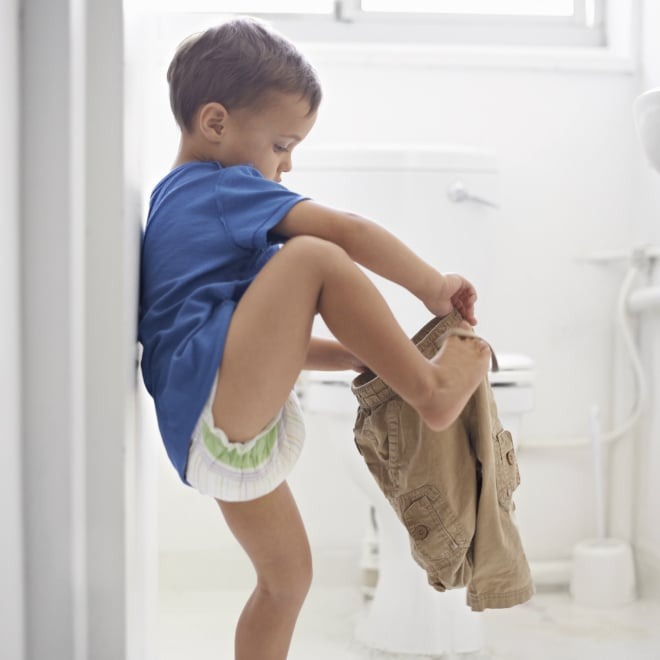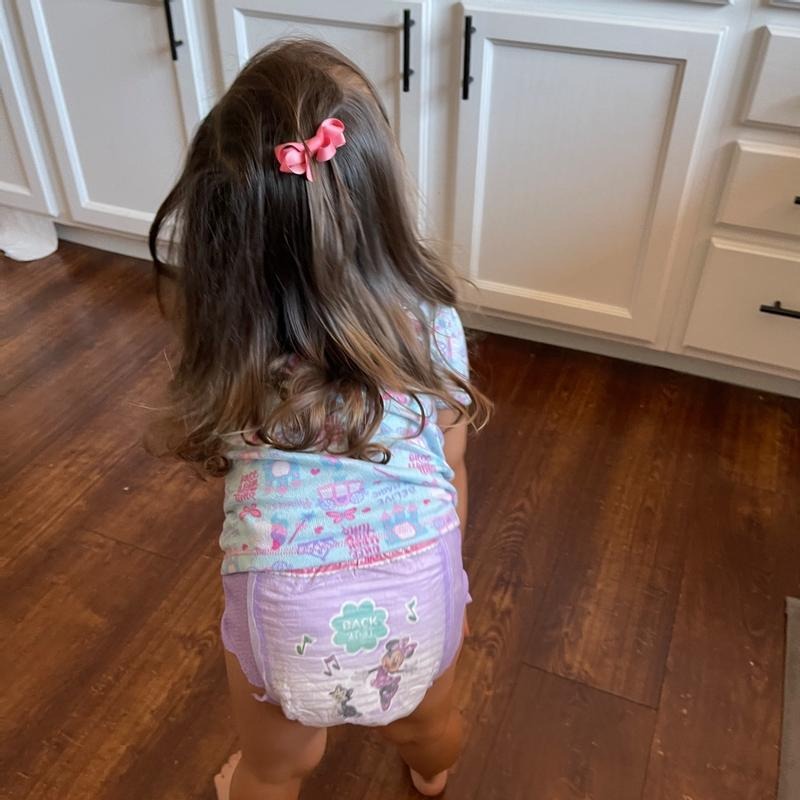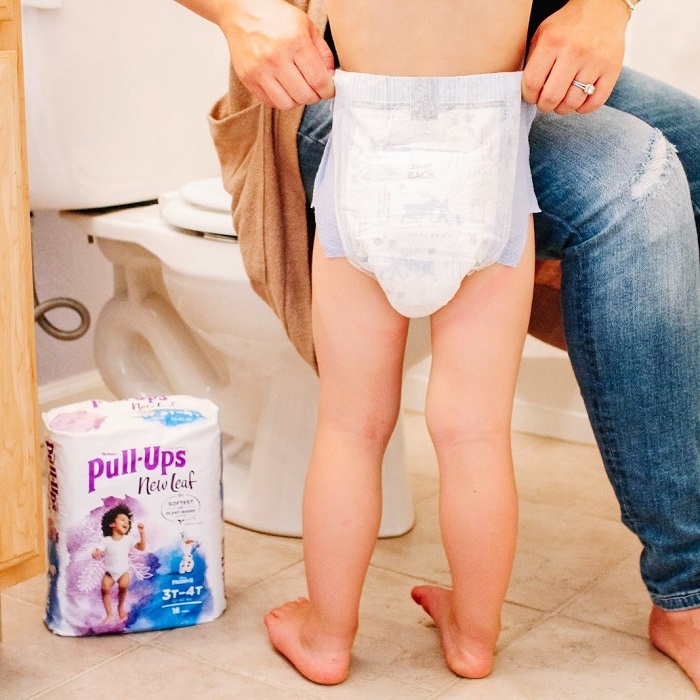Signs It’s Time to Transition to Pull-ups
Understanding when to switch from diapers to pull-ups is crucial for your child’s development and self-esteem. The transition is a significant step in potty training and marks a move towards independence. Here are some key signs that indicate it’s time to make the switch:
- Increased Awareness: Your child starts showing awareness of their wet or dirty diaper by pointing or telling you about it. This shows they are ready for the next step.
- Discomfort with Diapers: When children become uncomfortable in wet diapers, or try to remove them, it suggests they might be ready for the more underwear-like feel of pull-ups.
- Interest in the Bathroom: Showing interest in using the toilet or wanting to watch parents or siblings use it can be a sign that they are prepared to start toilet training.
- Staying Dry for Longer: If your child’s diaper remains dry for longer periods, especially during the day, it might be time to try pull-ups, which are ideal for kids who have started to control their bladder.
- Ability to Follow Instructions: The ability to follow simple instructions is essential for potty training and transitioning to pull-ups. If your child can do that, they may be ready for the change.
- Pulling at Diapers: An eagerness to pull at their diapers or wanting to wear ‘big kid’ underwear are indications that your child might be ready to switch to pull-ups.
Choosing the right time to transition from diapers to pull-ups can set the stage for successful potty training. Keep an eye out for these signs and discuss the transition with your child to ensure they are comfortable and ready for this new phase.
Understanding Pull-ups and Their Benefits
Pull-ups are more than just a step up from diapers. They come with several benefits that make the transition smoother for both you and your child. Here’s why pull-ups can be advantageous:
- Promote Independence: With designs that resemble regular underwear, pull-ups encourage kids to take charge of their bathroom habits.
- Ease of Use: Kids can easily pull them up and down without assistance, fostering a sense of self-reliance.
- Less Mess: Pull-ups have tear-away sides for quick changes, reducing the mess that comes with accidents.
- Training Tool: They serve as an effective training tool, allowing children to recognize the feeling of wetness, which is crucial in potty training.
- Nighttime Protection: Offering extra absorbency, pull-ups prevent leaks at night, giving both you and your child peace of mind.
- Comfortable Fit: Designed to fit snugly, pull-ups won’t hinder your child’s movement, making them comfortable to wear all day.
- Builds Confidence: Successfully using pull-ups boosts your child’s confidence, a key factor in successful potty training.
Considering these benefits, it’s clear that knowing when to switch from diapers to pull-ups is essential. They not only aid in the development of your child’s potty training skills but also enhance their comfort and confidence during this growth phase.
Preparing Your Child for the Change

Transitioning your child from diapers to pull-ups is a journey filled with new experiences for both parent and child. Open communication and a supportive atmosphere are key in easing into this stage. Here are steps to prepare your child for switching to pull-ups:
- Start with Conversation: Talk to your child about the upcoming change. Use simple and positive words to explain what pull-ups are and how they’re used.
- Shopping Together: Involve your child in picking out their pull-ups. Letting them choose their favorite colors or characters can create excitement.
- Explain the Differences: Make sure to point out the similarities and differences between diapers and pull-ups, highlighting the benefits of pull-ups in a way they can understand.
- Set a Start Date: Choose a day to start the transition and build it up as something exciting to look forward to.
- Role Modeling: Introduce the concept of pull-ups through role-playing with a favorite toy or showing them how older siblings use them.
- Practice Makes Perfect: Encourage your child to practice pulling their new pull-ups up and down to get used to the new motion.
- Positive Reinforcement: Offer praise and encouragement each time your child tries, even if they don’t get it right every time.
- Patience is Key: Remember, each child adapts to change differently, so be patient if things don’t happen as quickly as you’d like.
By carefully preparing your child for the change from diapers to pull-ups, you are setting the foundation for a successful transition. Keep the process simple, positive, and encouraging as your child learns to embrace their new independence.
How to Introduce Pull-ups to Your Child
Introducing pull-ups to your child should be an exciting and positive experience. Here is a step-by-step guide on how to get started:
- Choose the Right Time: Look for the signs mentioned earlier to ensure your child is ready.
- Create Excitement: Explain how pull-ups are a special ‘big kid’ garment. Use fun language.
- Pick Fun Designs: Let your child select pull-ups with their favorite colors or characters.
- Demonstrate Use: Show them how they go up and down, making it a playful activity.
- Incorporate Dress-Up Games: Make a game of practicing with the pull-ups. Cheer each success.
- Offer Guidance: Assist them initially but encourage them to try on their own.
- Ensure Accessibility: Keep the pull-ups in a place where your child can easily reach them.
- Be Consistent: Use pull-ups regularly to establish a routine and foster habit formation.
- Reassure Them: Assure your child it’s okay to have accidents and part of learning.
- Celebrate Milestones: Acknowledge when they successfully use pull-ups or the potty.
By incorporating these simple steps into your child’s routine, you can create a smooth transition from diapers to pull-ups. This process emphasizes the child’s growing independence and reinforces their advancement in potty training.
Tips for Encouraging Independence with Pull-ups

Gaining independence is a big part of why pull-ups are so helpful. To assist your child in feeling like they have control over their potty training journey, consider using these tips:
- Cheer On Efforts: Always cheer your child on, even for small accomplishments. It boosts their desire to try.
- Dress-Up Games: Encourage dress-up time with pull-ups to make learning fun and empowering.
- Accessible Pull-ups: Place pull-ups where your child can easily get them. This teaches self-help.
- Visual Aids: Use charts to track progress and show your child how much they’re achieving.
- Allow Choices: Let them decide on which pull-up to wear. Choice gives a sense of control.
- Teach Self-Check: Show your child how to check if they’re wet and need to change. This promotes self-awareness.
- Simple Instructions: Use simple, clear commands when directing your child. This makes tasks manageable.
- Routine Setting: Establish a routine that includes regular potty breaks. This consistency helps them learn.
- Celebrate Self-Initiative: Praise your child when they take the initiative to go on their own.
- Offer Rewards: Small rewards can work wonders. They reinforce positive behavior and progress.
By incorporating these strategies, you encourage your child to own their potty training process. This can make the shift from diapers to pull-ups both successful and confidence-building. Remember, every child is different. Be patient and adjust your approach to what works best for your child.
Common Challenges During the Transition
Transitioning from diapers to pull-ups is a big step for a child. However, it can come with its challenges. Recognizing and addressing these can make the process smoother. Here are the most common issues you may encounter:
- Resistance to Change: Some children may resist swapping their familiar diapers for new pull-ups. Remain patient and persistent.
- Confusion about When to Use the Potty: Children might be unsure when to use pull-ups or a toilet. Clarify the difference regularly.
- Accidents During Sleep: Nighttime accidents can happen even with pull-ups. Protect the bed and offer comfort.
- Leaks and Spills: Pull-ups are not fail-proof. Expect occasional leaks and handle them calmly.
- Difficulty Pulling Up or Down: Your child might struggle with the mechanics of using pull-ups. Assist and encourage practice.
- Over-Reliance on Pull-ups: Children may become too comfortable and delay using the potty. Encourage regular toilet visits.
- Peer Pressure: If older children or peers are using the toilet, your child may feel pressured or embarrassed. Offer support.
- Managing Public Outings: Using pull-ups away from home can be tricky. Plan ahead for bathroom breaks.
It’s important to navigate these challenges with understanding. Stay upbeat and offer plenty of encouragement. Remember that this is a new skill, and it takes time to master. Keep your approach flexible and adjust to your child’s pace. Reinforce progress with positive reinforcement, and remind them that it’s okay to make mistakes. With these strategies, you and your child can overcome the hurdles of transitioning from diapers to pull-ups.
Pull-ups and Potty Training Strategies

Pull-ups play a vital role in successful potty training. Here are strategies to use:
Establish a Potty Schedule
Stick to regular times for your child to try using the potty. Consistency is key.
Use Positive Language
Encourage with words like ‘you can do it’ and ‘great job’ to keep spirits high.
Teach Proper Hygiene
Explain and demonstrate washing hands after every potty use. Make it a habit.
Gradual Transition
Start with pull-ups, then introduce underwear during the day as confidence grows.
Praise and Rewards System
Offer stickers or extra playtime when they succeed. Rewards can motivate.
Limit Liquids Before Bed
To reduce nighttime accidents, cut back on drinks close to bedtime.
Lead by Example
If possible, show them how siblings or parents use the toilet properly.
Effective potty training with pull-ups requires patience, encouragement, and a good plan. It’s about striking a balance between giving your child independence while still providing guidance and support. When you combine pull-ups with these strategies, the pathway to being diaper-free is much smoother and more positive for everyone involved.
When to Say Goodbye to Pull-ups
Knowing when to switch from diapers to pull-ups is crucial, but it’s just as important to know when it’s time for your child to move on from pull-ups to regular underwear. This significant milestone marks a new level of independence for your child. Here are clear signs that your child may be ready to leave pull-ups behind:
- Consistently Dry Pull-ups: If your child’s pull-up is regularly dry during the day and night, they might be ready for underwear.
- Recognizes the Need to Go: Your child can tell you when they feel the urge to use the bathroom before they actually go.
- Interest in Underwear: They show interest in wearing ‘big kid’ underwear and may ask about it.
- Independence in Bathroom: They can go to the bathroom and perform all tasks (like wiping and flushing) without help.
- Dislike for Pull-ups: They may express discomfort or dissatisfaction with wearing pull-ups.
When these signs are consistent, begin the transition by letting them wear underwear during the day. Keep pull-ups for nighttime until they are consistently waking up dry. Remember, like all steps in potty training, this phase requires patience and support from you. Celebrate this new phase with enthusiasm and reassure your child that it’s okay to have an occasional accident. With guidance and encouragement, your child will confidently say goodbye to pull-ups.



